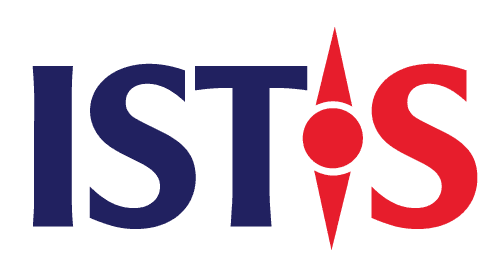Data Is Everywhere
You might not notice it, but nearly everything you interact with online is quietly guided by data. Every time you open a streaming app and see “Top Picks for You,” or browse an online store and find eerily relevant product suggestions, that’s not coincidence—it’s data analytics working behind the scenes.
The same goes for when you check the weather, request a ride, scroll through your social media feed, or even search for a restaurant. Data flows constantly in the background, collected, sorted, and analyzed to create a digital experience that feels smooth, timely, and personal. Without fanfare, algorithms are learning from your choices—what you watch, click, skip, linger on—and then using that information to offer more of what you’re likely to want.
This invisible infrastructure has become so seamless, we often forget it’s there. Take navigation apps, for instance. They don’t just show a map. They digest traffic patterns in real-time, combine it with historical data, and suggest the fastest route based on thousands of similar trips. Grocery delivery apps know what you might reorder. Job portals suggest openings that match not just your title, but your behavior, your browsing patterns, and sometimes even your likelihood to apply.
Even when you’re offline, data is at work. Surveillance cameras use analytics to detect anomalies. Retail stores study foot traffic to redesign aisles. Cities analyze commuter trends to adjust public transport. The digital fingerprints we leave—knowingly or not—become fuel for smarter systems.
And yet, for something so powerful, data rarely announces itself. It doesn’t show up in headlines as often as politics or celebrity news. But it’s just as influential, if not more so, in shaping what we see, what we buy, and even how we think.
This section isn’t about making you paranoid—it’s about making you aware. Because when we understand the silent influence of data in daily life, we begin to ask better questions. We start noticing patterns. And in a world where algorithms often shape reality before we do, that awareness is power.
Making Sense of Data
You don’t need to be a data scientist to understand the basic logic behind data analytics. At its core, it’s really about asking smart questions, spotting patterns, and using evidence to make better decisions. Think of it as noticing trends on a larger scale—just with more help from machines.
Imagine running a small café. If you start noticing that certain pastries sell out by noon while others sit untouched until closing, you’re already analyzing data. You’re making decisions based on observation—what works, what doesn’t, and what might need tweaking. That’s the human version of analytics.
Now, multiply that idea by thousands of customers, months of sales history, weather conditions, local events, and even social media chatter. A good data analytics tool will crunch those layers in minutes and offer insights: maybe chocolate croissants sell best on rainy Fridays, or online ads drive more foot traffic than sandwich boards. Suddenly, your intuition is backed by facts.
How Organizations Use Data to Move Faster and Smarter
Turning data into action means weaving insights into the everyday rhythm of decision-making—so that strategy isn’t a quarterly plan, but a daily practice. Let’s start with something simple: timing. A retailer notices that search interest for winter gear spikes two weeks earlier than usual. Instead of sticking to the old calendar, they launch a targeted campaign ahead of competitors. That’s data-driven agility—not just analytics, but action taken fast and with purpose.
The best organizations don’t just collect and report data; they integrate it across teams. Marketing uses it to tailor campaigns. Product teams rely on it to refine features. Finance tracks it to forecast with more accuracy. It becomes the common thread that unites operations, not a separate department speaking in charts and jargon.
Take a healthcare provider analyzing hospital readmission rates. Instead of reporting after the fact, they build real-time dashboards that trigger interventions—follow-up calls, tailored patient education, early warning systems. The result? Fewer returns, better care, and more efficient use of resources.
The private sector isn’t alone in this. In the public realm, cities are analyzing mobility data to re-route traffic and reduce pollution. Universities track student behavior to design more supportive learning experiences. NGOs measure impact metrics to improve programs on the fly—not just once a year.
What enables this kind of responsiveness? Three things: access to timely data, a culture that trusts data over hierarchy, and tools that make insights visible and actionable. Many organizations now build “data squads” that sit with product teams, or embed analysts into decision-making units rather than isolating them in IT.
But being data-informed doesn’t mean chasing every number. It’s about focus—finding the signals that matter and acting decisively. That often requires simplifying dashboards, translating metrics into plain language, and making sure frontline teams know what to do next.
Ultimately, action is where the value of data is realized. Insight is only powerful if it leads somewhere—if it pushes people to respond faster, adapt quicker, and learn better. Data doesn’t replace human judgment; it sharpens it, in real time.
Common Mistakes and Missed Opportunities in Data Use
For all the hype around data analytics, many organizations still stumble—not because they lack tools, but because of how they use them. The roadblocks are rarely technical. More often, they’re strategic, cultural, or simply human.
A common misstep is collecting too much data without knowing why. Teams end up swimming in dashboards, metrics, and KPIs that don’t inform any real decisions. Data becomes noise instead of insight. Without clear questions guiding what’s being measured, the analytics effort risks becoming a vanity exercise—impressive visuals, but no impact.
Another issue is the overreliance on historical data. Past trends can inform, but they don’t always predict future shifts—especially in volatile markets. Businesses that base strategy solely on what happened last year can miss emerging signals and move too slowly. Data needs to be paired with curiosity and real-time observation, not just retrospection.
Siloed data is another trap. Different departments often use different tools, store data in separate systems, and define metrics in conflicting ways. This fragmentation not only slows down analysis but also erodes trust. Two teams reporting different numbers for the same question? It happens all the time—and it paralyzes action.
Then there’s the talent gap. Not every organization needs a data science team, but failing to invest in people who can interpret and communicate data is a missed opportunity. Hiring for technical skills alone isn’t enough. You need translators—people who understand the business and can bridge the gap between data and decisions.
Even when the insights are sound, many organizations falter in the “last mile”: turning analytics into behavior. This could be a lack of leadership buy-in, a rigid culture that resists change, or simply unclear next steps. Insights should come with action plans, not just charts and confidence intervals.
Finally, many forget the user. Data tools are often designed for analysts, not decision-makers. If a dashboard is hard to use or interpret, it won’t be used at all. The best analytics are the ones that simplify complexity—not add to it.
Avoiding these pitfalls doesn’t require a bigger budget or the latest AI model. It requires clarity, collaboration, and a relentless focus on what the data is for, not just what it says.
The Future of Data Analytics
Data analytics is nbecoming a core requirement for survival. But what it looks like in the next decade will be dramatically different from the dashboards and BI tools of today.
One major shift is the rise of automated insights. Businesses are moving beyond static reports to systems that surface recommendations in real time—without waiting for a monthly review. Thanks to machine learning, these systems can identify anomalies, predict outcomes, and suggest next steps automatically. This turns data from something you consult after the fact into something that actively shapes what you do next.
AI and large language models are also changing the interface of analytics. Instead of building custom dashboards, users will soon ask natural-language questions like “Why did sales dip in Q2?” and receive contextual, visual, and actionable answers. Analytics becomes conversational—less technical, more intuitive.
The future will also bring more context-aware and ethical analytics. It’s not just about what the numbers show, but how they were collected, what biases they carry, and what social consequences they might cause. As AI models become more influential in decision-making, questions of fairness, transparency, and accountability will rise to the surface. Regulations and public pressure will demand it.
Privacy-enhancing technologies—such as federated learning and differential privacy—will become standard in sectors like healthcare, finance, and public policy. These innovations allow organizations to analyze sensitive data without exposing personal details, striking a new balance between insight and confidentiality.
Another major trend is the blending of human intuition and machine guidance. The best decisions will come not from machines or people alone, but from systems designed to augment human thinking. Organizations will need to build cultures that value both data literacy and critical thinking—not one over the other.
Lastly, the democratization of data will continue. Low-code and no-code analytics tools will empower non-technical staff to experiment, model, and act on insights independently. As access widens, organizations that invest in education, governance, and trust will be the ones that thrive.






